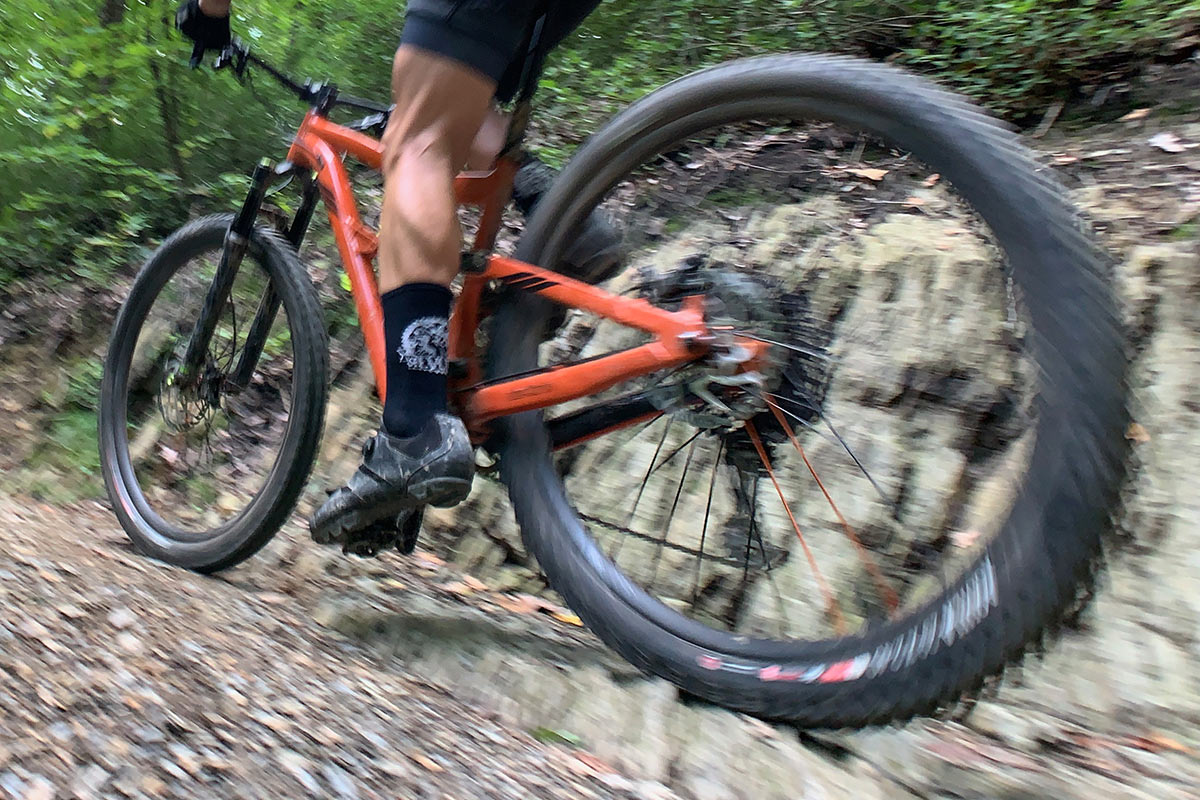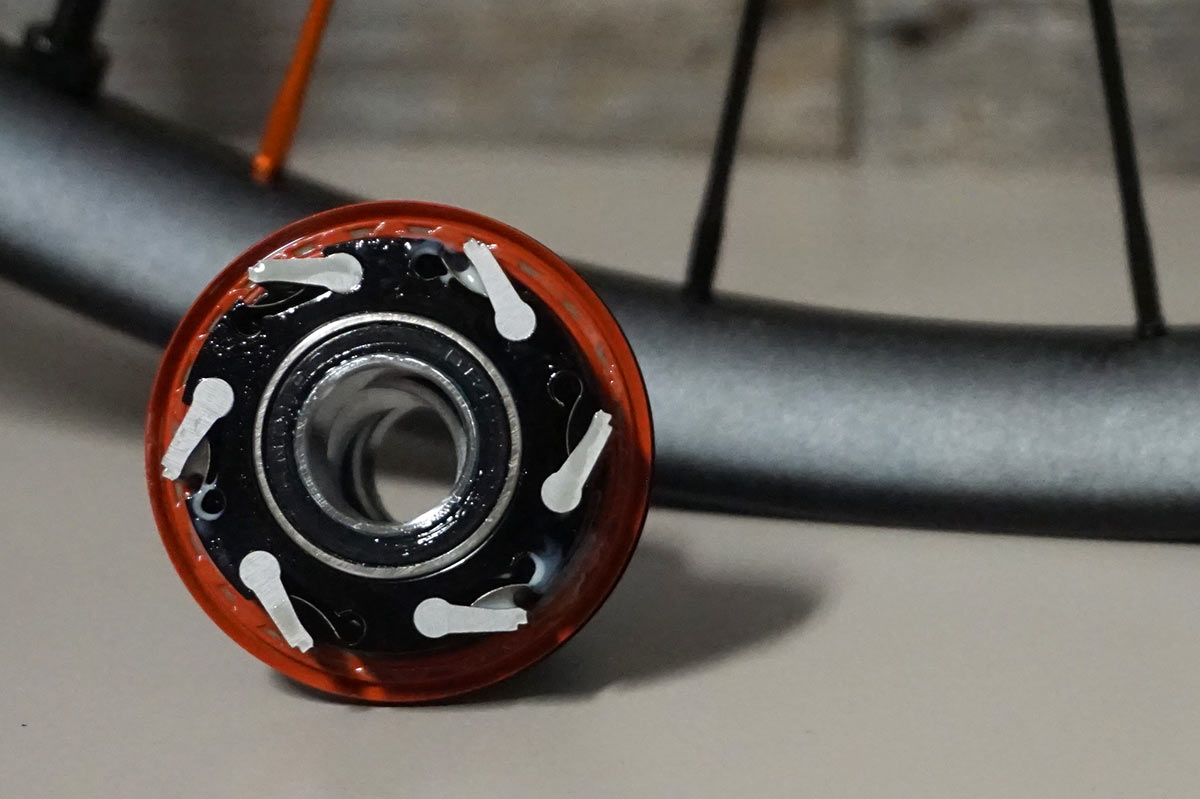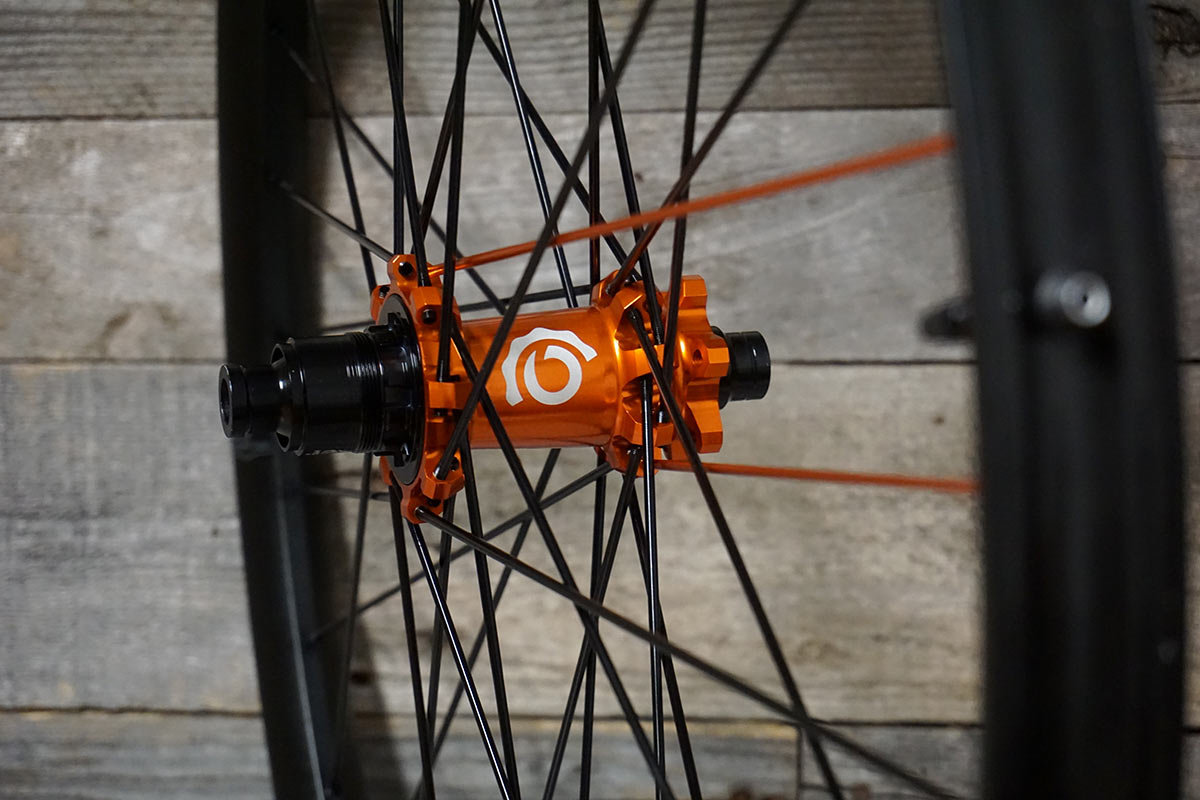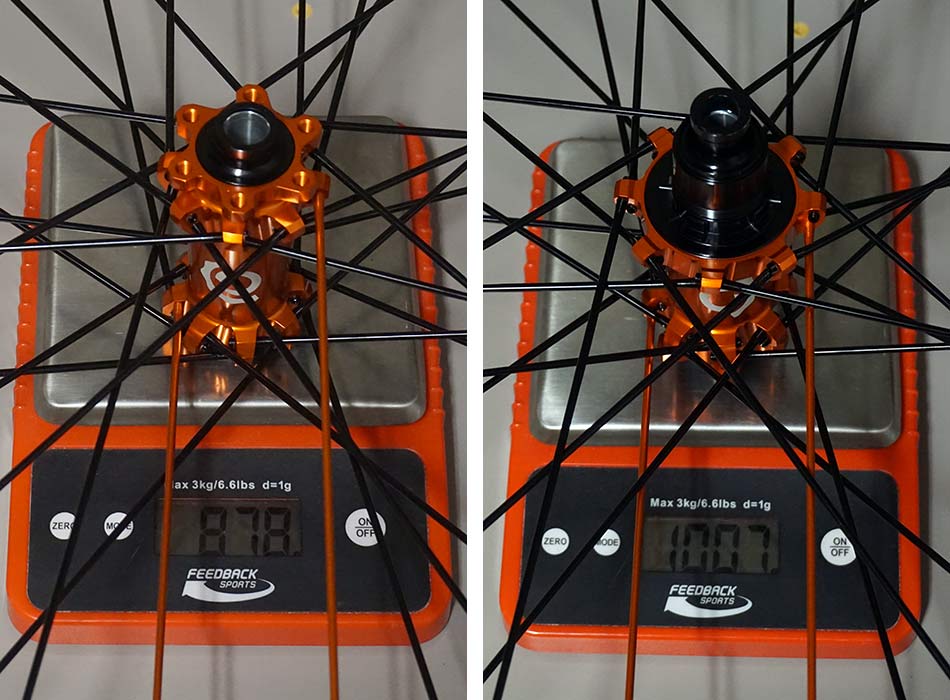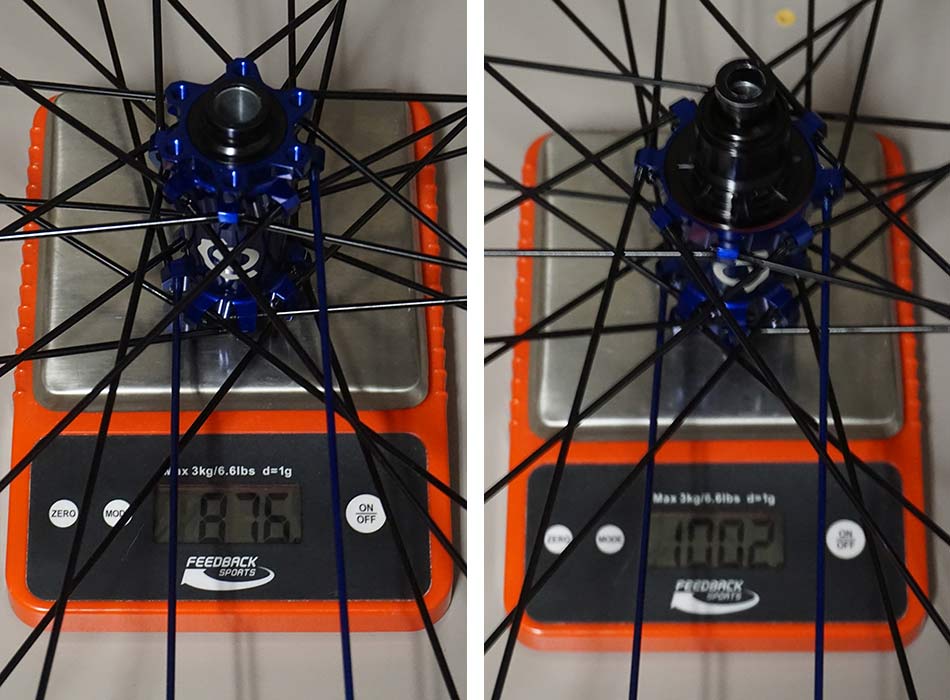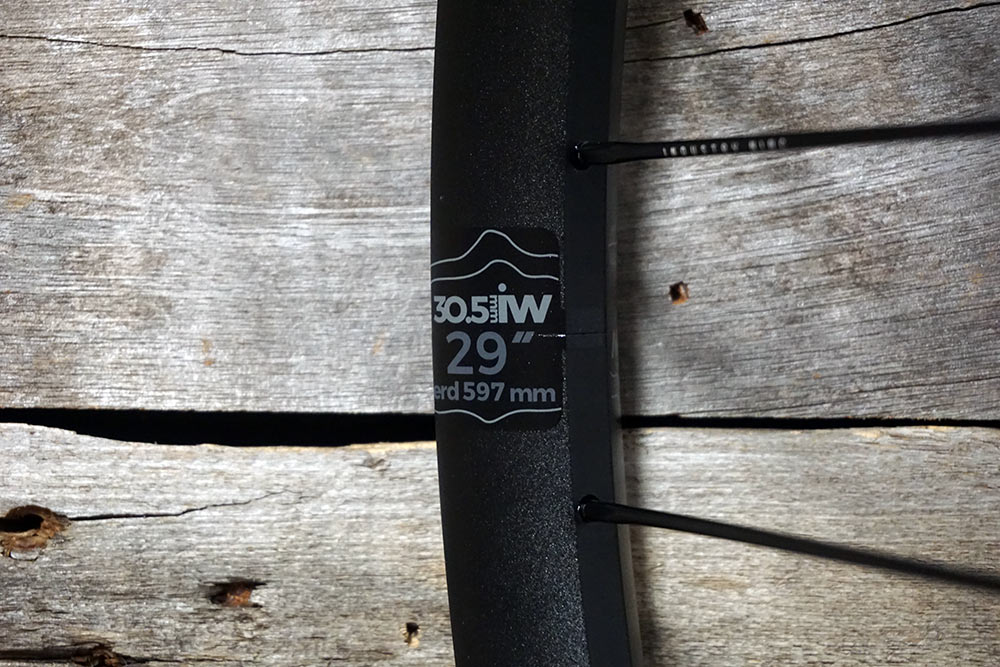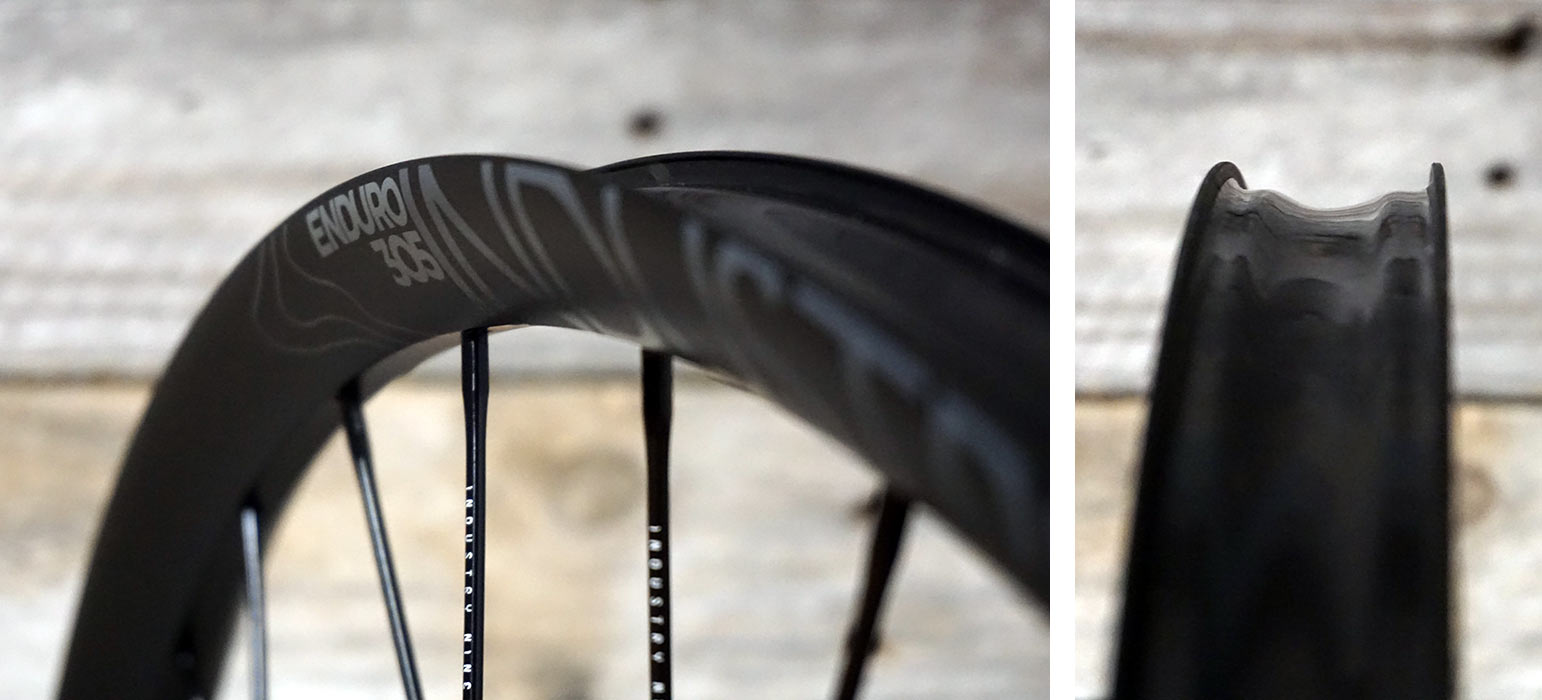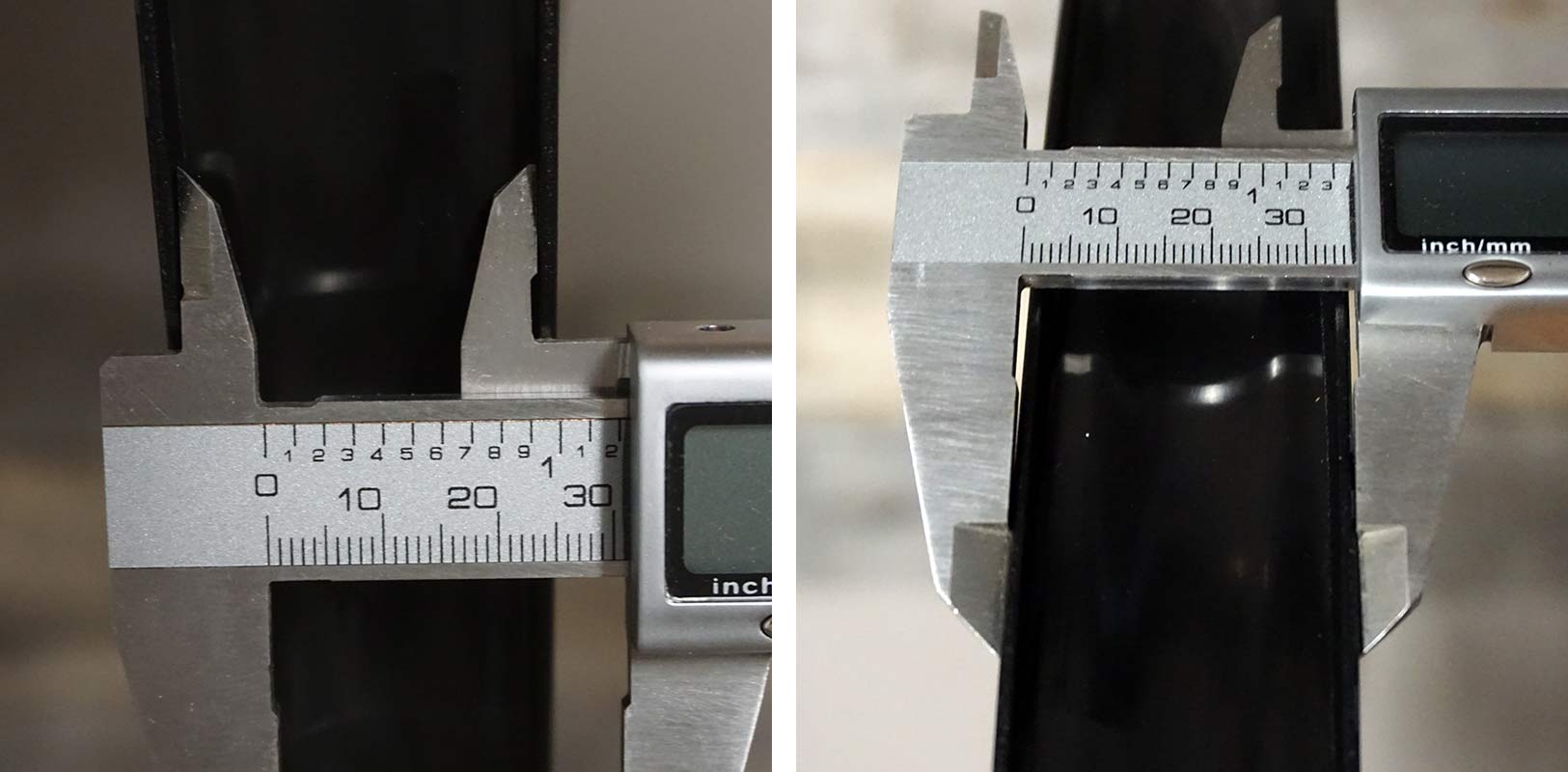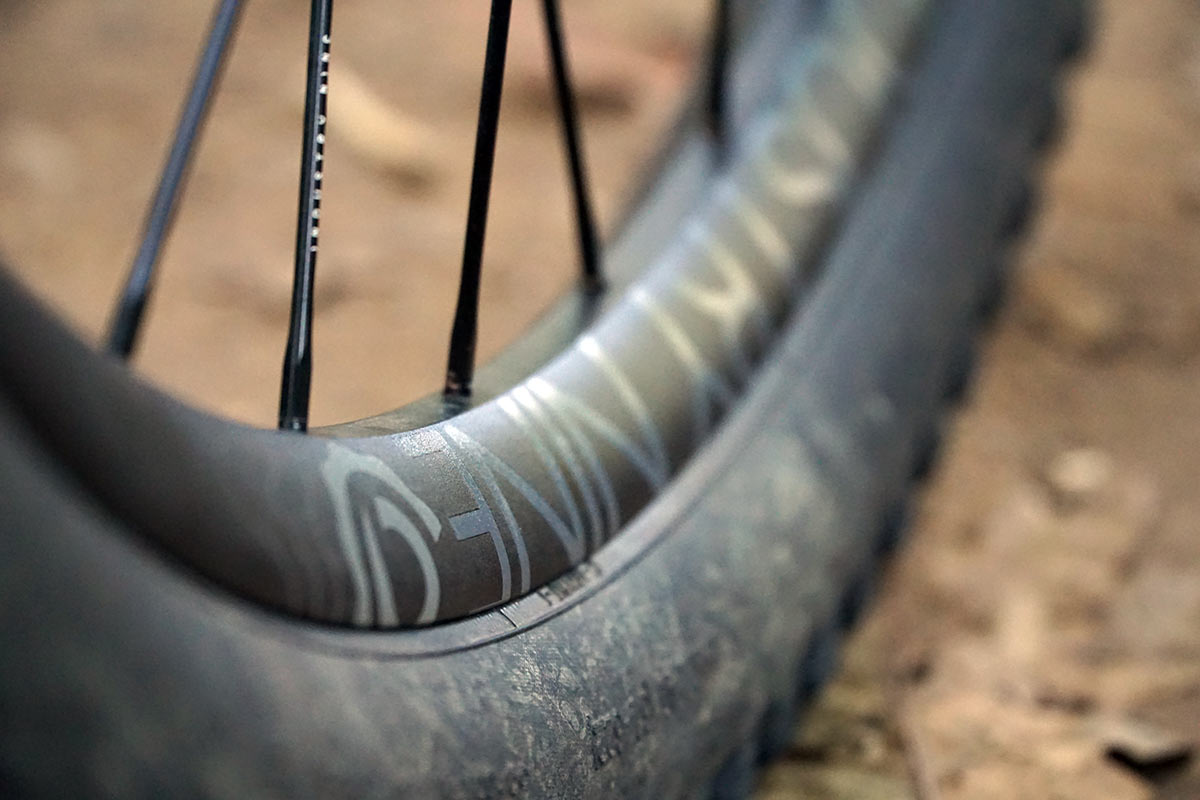We took two sets of the new Industry Nine Hydra Enduro wheels on our Eastern Tennessee mountain bike road trip, hitting three epic trail networks in three days.
If you’re considering the latest, greatest, and highest end mountain bike hubs from Industry Nine, it’s important to know how they’re different. There are a lot of major and minor upgrades between these and the outgoing Torch hubs they replace. Some aren’t so obvious. But the sum of the improvements is a hub (and wheelset) that is better than ever, which is saying a lot for a brand that’s been growing quickly on is reputation for quality.
After the TN trip, I headed to Asheville to ride the improved Avery Creek trail with I9’s VP, Jacob McGahey, and see how they held up on their home trails. And pick his brain on the new design. Here’s how it all went…
What’s the difference between I9 Hydra and Torch hubs?

You know how sometimes you only notice something’s different when you go to swap parts around and things don’t fit right? Such was my dilemma on the morning of the NC ride with I9. I’d stopped by to grab a Shimano freehub body as I’d recently moved the wheels to a bike with prior generation XT. But clerical errors sent me packing with a Torch FH body rather than the new Hydra FH body. You can see the difference above. The Hydra’s axle is a bit smaller, meaning a smaller inside diameter (ID) on the bearing. Here’s why:
“With regards to the smaller bearing ID, this allowed us to go to bearings with a 1mm larger cross-section height and a much higher load-carrying capacity,” McGahey explains. “One of our main goals for Hydra was to increase bearing life and this was part of what allowed us to accomplish that target. The other element that improves bearing life is the Hydra mechanism itself – as it ensures you will never have one pawl receiving the full drive load (which can create a large cantilever force).
“Additionally, our Hydra front hubs went to a new axle assembly that extends through the inner bearing races instead of acting like a spacer as the Torch axle did. This ensures you always have perfect bearing alignment and improves the front bearing life as well. There were several other small changes we made as well including a double flanged labyrinth style endcap seal (replacing the Torch Teflon seal) on all of the endcaps.”
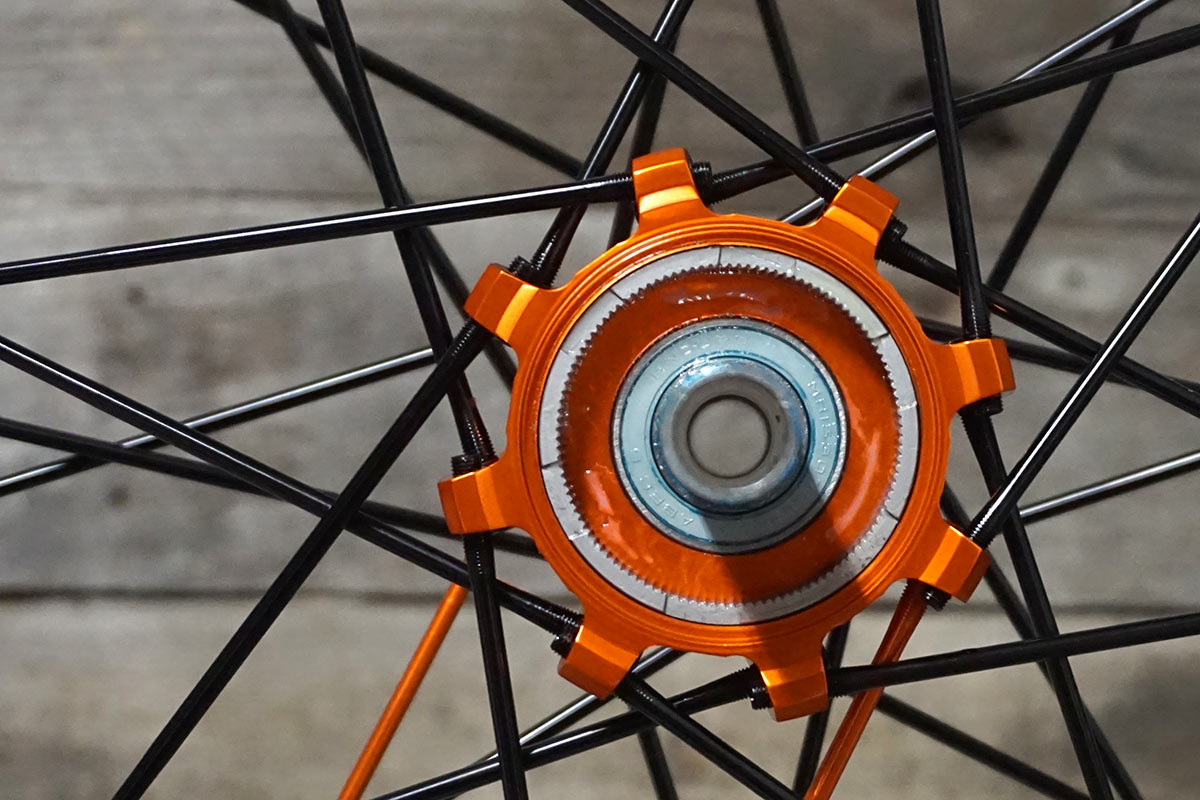
Brilliant. And especially more important these days with massive 50 and 51 tooth cogs giving riders a tremendous amount of leverage on the system.
OK, how is Hydra better than their 1/1 hubs?
Fair question, considering the price difference. At $425 for 1/1 and $650 for Hydra, there should be a good bit separating the two. Hydra has 690 POE (0.52º), and 101 has 90 POE (4.5º). The Hydra wheels come with lighter alloy valve stems, and 1/1 gets brass stems.
Cosmetically, the Hydra’s additional surface finishing gives them a more polished look, and you can get them with either I9’s in-house machined alloy spokes, or opt for the Classic version to use traditional spokes and lace them to any rim you want. Speaking of, with the standard Hydra, you can choose from any of I9’s mountain bike rims, but with 1/1 you’re limited to either Trail or Enduro alloy rims, no carbon (for complete wheels, anyway…you can get the 1/1 hubs separately and lace them to whatever you want).
Wondering what the 1/1 is? They were originally called 101 but had to switch names. You can read our 1/1 Trail wheel review for the full tech overview on those. There are some other key differences in their manufacturing processes between the two, and we explain it all in great detail in that review.
Industry Nine Hydra wheels actual weights & widths
Watts and I both rolled through TN on a set of functionally identical Industry Nine Hydra Enduro wheelsets. Both were 29er, both using I9’s alloy Enduro rims, laced with 32 spokes front and rear. Weights were 878g F / 1007g R for orange hub and accent spokes (1,885g total), and 876g F / 1002g R for blue (1,878g total). So, it’s official, blue is lighter than orange. Both had rims pre-taped for tubeless with alloy valve stems installed.
Their alloy Enduro rims measured 31mm internal and 35mm external.
How do they ride?
Well, if you’ve ridden their Torch hubs, they’ll feel similar, but better. Honestly, Jacob didn’t give us the full tech explanation of how these hubs were different/better than Torch until after we’d wrapped up our riding on them and started writing this review. So the immediately apparent benefit of Hydra is the insanely quick engagement. It’s imperceptibly fast. As in, zero lag between you starting to pedal and it propelling the wheel forward. Which is good if you’re into things like efficiency.
Speaking of efficiency, one complaint we’ve heard from some riders in the past was that Industry Nine’s hubs felt draggy. After all, even the Torch hubs had a lot of ratchet teeth, and that means a lot of metal dragging on metal. I’d never really noticed it, especially once the hubs’ seals had been broken in from a few good rides. But the complaint was there. If anything, I’d say these are probably less draggy. The teeth and pawls are all much, much smaller. Yes, more of them, but much smaller contact patches. Or maybe more metal. Think what you will, but both our sets of wheels seemed to roll freely right out of the box.
As for the improved lateral rigidity and stiffness, I’ll have to take their word on that. Recent I9 wheels I’ve ridden have felt markedly stiffer than the first generation wheels I had from them many, many years ago. But they’ve also had more spokes. Neither Watts nor I noticed any detrimental flex. And they never slipped or had any questionable engagement on the climbs and sprints. Watts is a bit of a beast, whether he’ll admit it or not. He can hammer. And he had nothing but positive things to say about these wheels.
Combined with the large 29×2.4″ Onza Aquila enduro tires, they rolled smoothly. The wheels never felt harsh on big hits or landings. I’d credit the alloy rims and spokes with this, but still impressive for a wheel build with 32 spokes and tires with beefy casings.
So, worth the upgrade? If you’ve got money to burn, sure, go ahead and sell those Torch hubs and grab these. Or put them on your list for the next wheelset. The 1/1 hubs and wheels are great, but the ultra-quick engagement and flashy rainbow of available colors give the Hydra a real advantage.
If you want to upgrade more, and drop about 200g, check out Zach’s review of the Hydra system with a lower spoke count, enduro carbon rim 29er build.
Where’d we ride them?
Curious about the bike parks we rode? Check out our stories on Knoxville, Windrock and Johnson City to plan your own long-weekend getaway. And check our reviews of the Ibis Ripmo AF, Onza Aquila tires and HT Components pedals to see how the rest of our gear held up!
